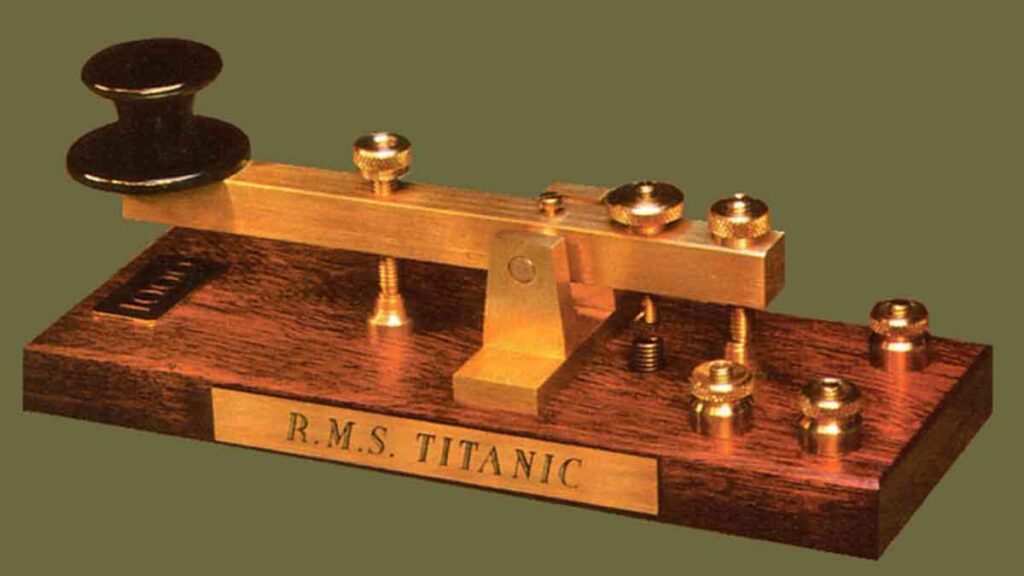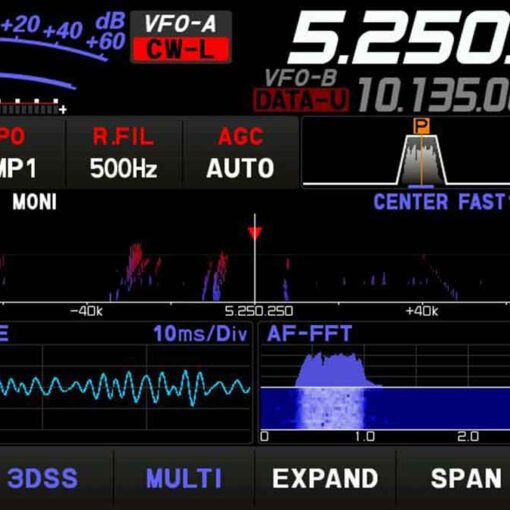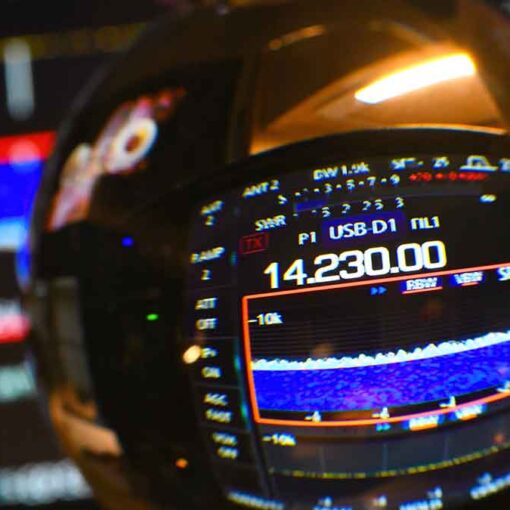
Where can you find slow-transmitting CW stations (QRS)?
Frequencies for QRS activity.
| 80 m | 3.550 – 3.570 kHz |
| 20 m | 14.055 – 14.060 kHz |
| 15 m | 21.055 – 21.060 kHz |
| 10 m | 28.055 – 28.060 kHz |
QRS stands for: transmit slower.
QRQ stands for: transmit faster.
Do you have key clicks?
Not only the content and format of what you transmit must be perfect…
…but also the quality of the CW signal you are broadcasting should also be good.
The number one quality issue is key clicking.
Key clicks are due to the shape of the signal you are emitting being an almost perfect square wave, with no rounded corners, often with a pronounced leading and trailing edge. This causes side effects, which are seen as taps to the left and right of the CW signal. There are three main reasons for this problem:
- One is the improperly peaked waveform containing many harmonics (a square wave).
- The second is feeding more than necessary power to the final amplifier, combined with incorrect actions with the ALC regulator (slow attack of the automatic gain control), resulting in a sharpening of the signal shape. It is always advisable to manually select the driver power rather than relying on the operation of the ALC circuit.
- The third is incorrect opening/closing of the high frequency relay at full break.
How to detect key knocking? An experienced ham living near you can carefully listen for such clicks.
It is much safer to monitor the broadcast signal continuously using an oscilloscope to show the shape of the broadcast signal. If you have the opportunity to do so.
Note that even some of the most modern transceivers are not immune to noticeable clicks.
If you notice clicks in your own broadcast or get a report of significant clicks, fix the problem or get help fixing it. Clicks in your signal are causing problems for other hams as well.
So fighting the clicks is a matter of ethics.



